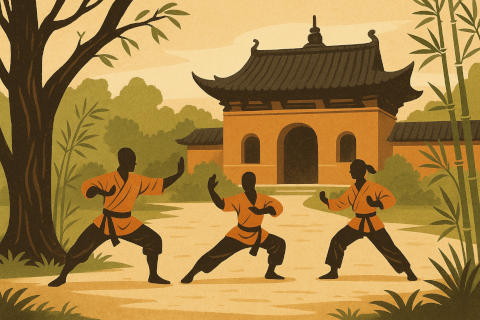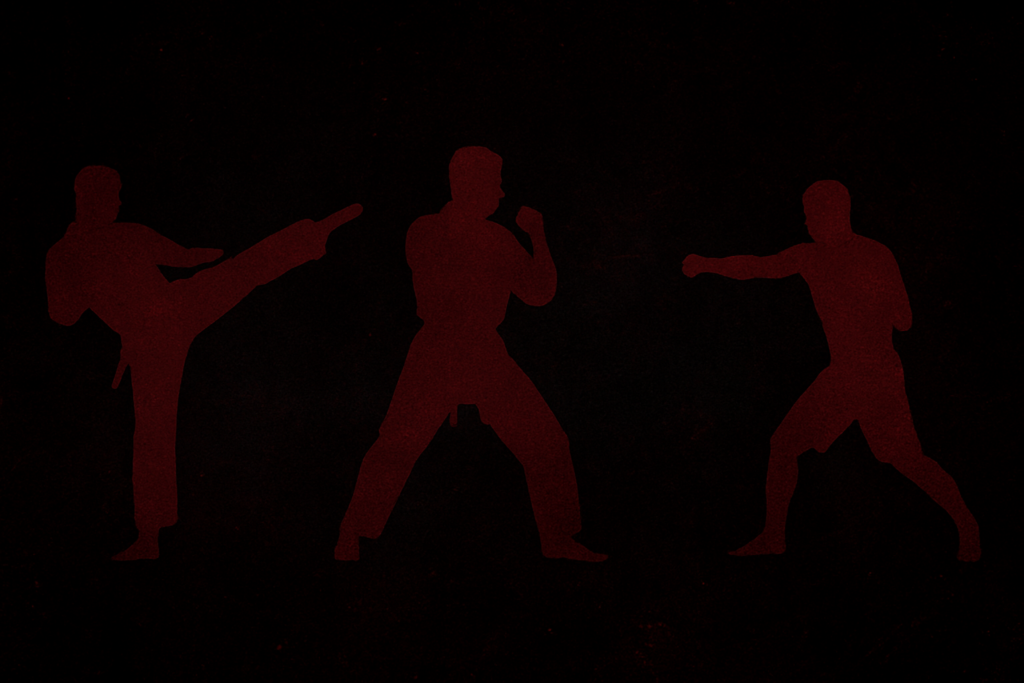The Ancient Art of Flow, Focus, and Inner Strength
🧠 A Brief History of Kung Fu

Kung Fu (功夫) — also known as Wushu (武术) in modern Chinese — refers broadly to the Chinese martial arts, an ancient and diverse system of physical training, self-defense, and philosophy.
While the term Kung Fu literally means “skill acquired through effort,” it has come to represent centuries of Chinese martial tradition that combine combat technique, meditation, and moral cultivation.
Martial arts in China date back thousands of years, but the Shaolin Temple, founded during the 5th–6th century CE, became the legendary cradle of Chinese martial culture. The monks there fused Chan (Zen) Buddhism with combat practice to strengthen both body and spirit.
From that foundation, countless styles evolved — some imitating animals, others emphasizing fluid motion, explosive power, or internal energy (Qi).
🥋 Main Characteristics of Kung Fu
- Core Principle: Balance of body, mind, and spirit through discipline and movement.
- Training Focus: Forms (taolu), striking, blocking, acrobatics, and weapon skills.
- Philosophy: Harmony between Yin and Yang — strength through softness, action through calmness.
- Objective: Self-mastery and internal balance as much as external skill.
Kung Fu’s diversity is unmatched — from soft, meditative arts like Tai Chi Chuan to hard, combat-oriented styles like Hung Gar or Wing Chun.
⚔️ Philosophy of Kung Fu
Kung Fu isn’t just about fighting — it’s about becoming whole.
It embodies ancient Chinese wisdom, blending Confucian ethics, Daoist balance, and Buddhist mindfulness.
As the Shaolin saying goes:
“Train the body to discipline the mind; train the mind to free the spirit.”
This mindset makes Kung Fu a path to self-improvement — one that encourages patience, respect, and humility through practice.
🏯 Major Styles of Kung Fu
There are hundreds of styles in Chinese martial arts, but several have gained worldwide recognition.
Here are some of the most influential and distinctive:
| Style | Founder / Origin | Key Characteristics |
|---|---|---|
| Shaolin Kung Fu | Developed at the Shaolin Monastery (Henan Province, ~5th century) | The foundation of most Chinese martial arts; powerful stances, diverse techniques, and deep spiritual roots. |
| Wing Chun | Attributed to Ng Mui (legendary Shaolin nun) and Yim Wing Chun (~17th century) | Short-range combat, direct attacks, simultaneous defense and offense; popularized by Bruce Lee’s teacher, Ip Man (1893–1972). |
| Hung Gar | Hung Hei-Gun (18th century, Southern China) | Low stances, strong hand techniques, inspired by the tiger and crane; excellent for developing endurance. |
| Tai Chi Chuan (Taijiquan) | Chen Wangting (1580–1660), Chen Village | Internal martial art focusing on slow, meditative movements and balance; promotes health and energy flow (Qi). |
| Wushu (Modern Kung Fu) | Evolved in China post-1949 | Sport version emphasizing acrobatics, speed, and artistic expression; seen in international competitions. |
| Praying Mantis, Eagle Claw, Drunken Boxing | Various | Animal-inspired techniques; emphasize agility, deception, and reflex. Each represents a distinct philosophy and strategy. |
🧍♂️ Who Can Practice Kung Fu?
Kung Fu’s beauty lies in its adaptability.
It welcomes practitioners of any age, gender, or fitness level.
| Group | Benefits |
|---|---|
| Children | Builds focus, coordination, discipline, and confidence. |
| Adults | Offers a full-body workout, stress relief, and self-defense. |
| Seniors | Internal styles like Tai Chi and Bagua Zhang enhance flexibility, balance, and longevity. |
Whether you’re drawn to meditative flow or intense physical challenge, there’s a Kung Fu style for you.
💪 Benefits of Practicing Kung Fu
Physical Benefits:
- Improves coordination, flexibility, and balance
- Builds strength, speed, and endurance
- Enhances posture and breathing control
Mental Benefits:
- Develops patience, emotional regulation, and confidence
- Increases mindfulness and mental clarity
- Teaches humility, focus, and self-discipline
Spiritual & Cultural Benefits:
- Connects to centuries of Chinese philosophy and history
- Encourages harmony with nature and oneself
- Cultivates compassion and inner calm
🐅 Kung Fu as a Modern Practice
Kung Fu today spans from traditional lineages to modern sport Wushu.
In movies and pop culture, stars like Bruce Lee, Jet Li, and Donnie Yen helped make it globally iconic.
But beyond the screen, it remains a living tradition — a practice of focus, flow, and respect that transcends generations.
🌸 Why You Should Try Kung Fu
Kung Fu is more than a martial art — it’s an art of life.
It teaches you to move gracefully, think calmly, and live with purpose.
Whether you seek fitness, philosophy, or self-defense, Kung Fu offers a path toward balance and strength — both inside and out.
🐉 Kung Fu is not about fighting others — it’s about conquering yourself.

